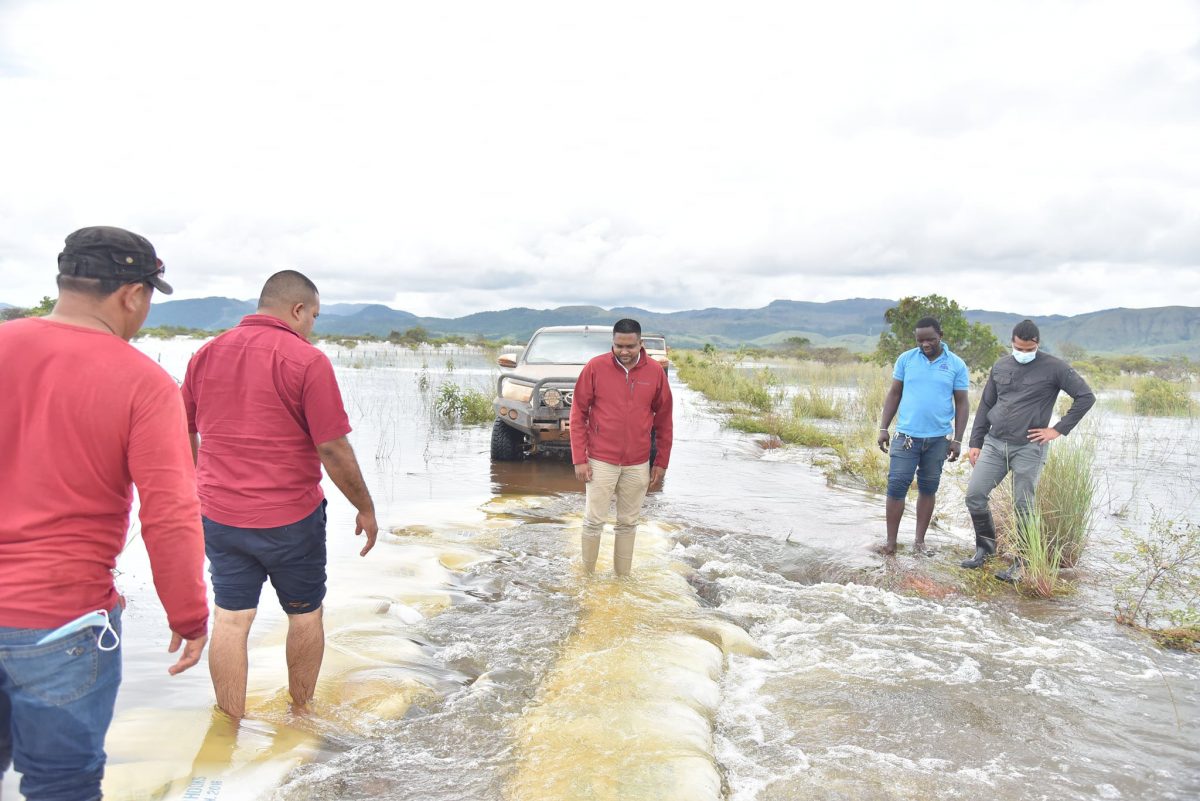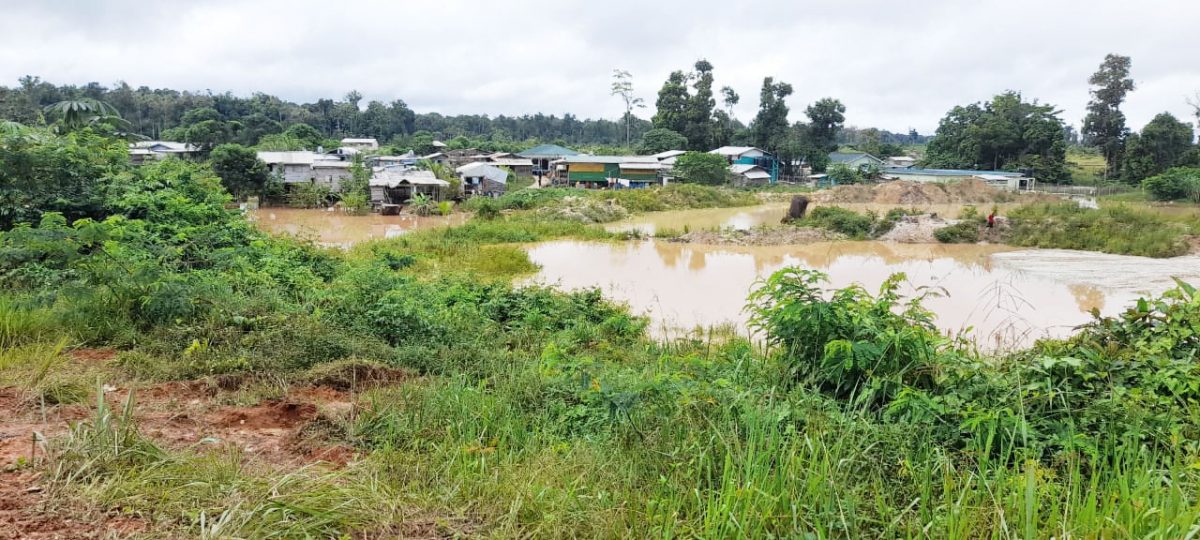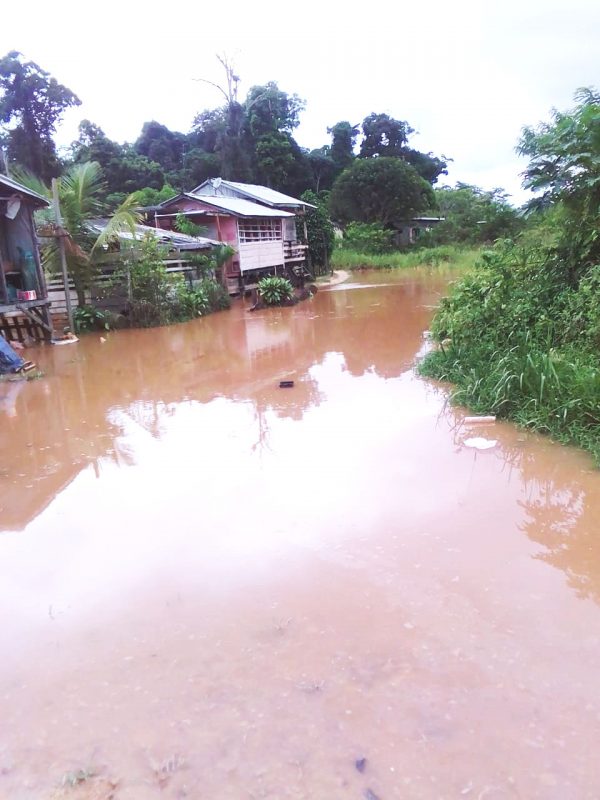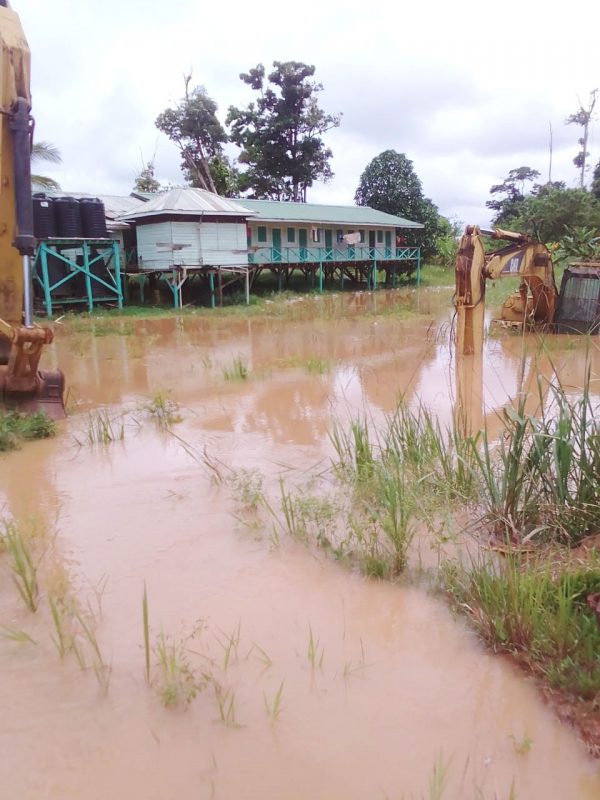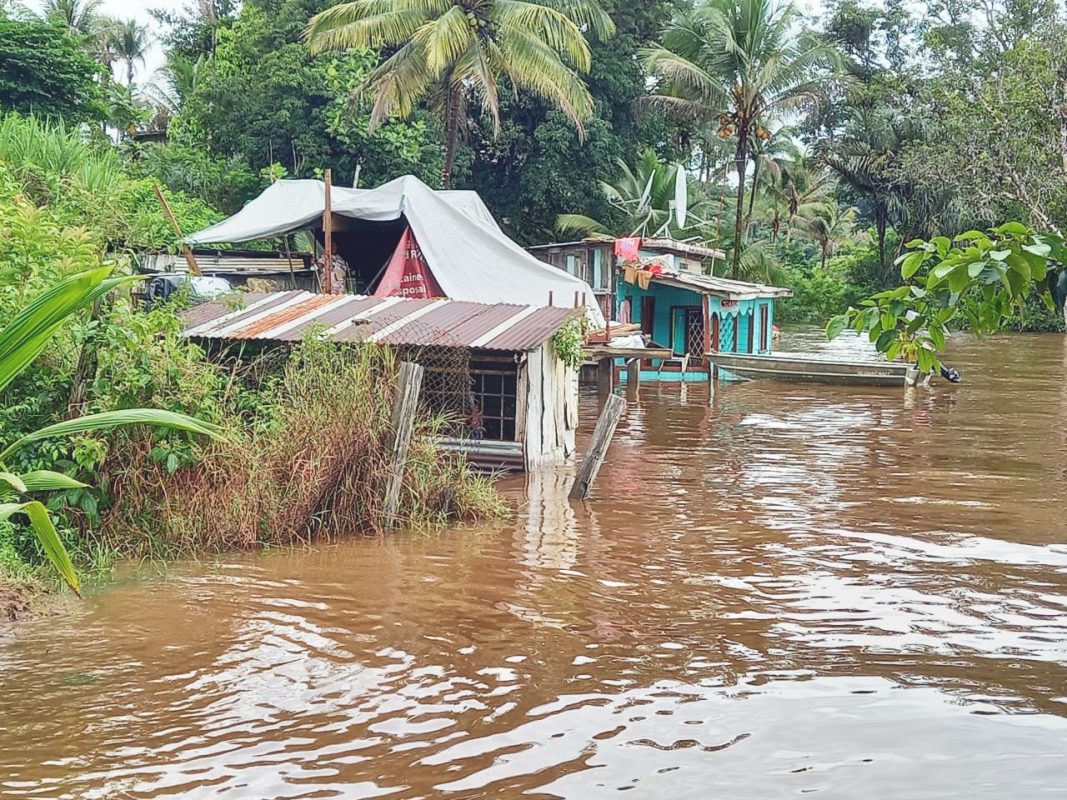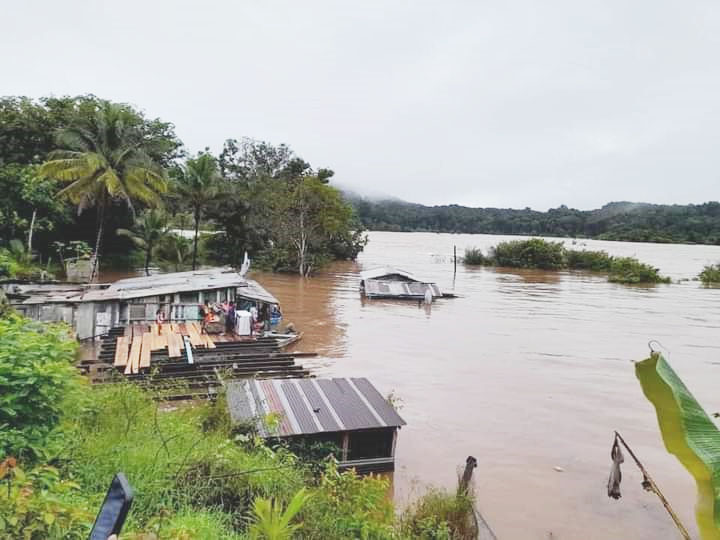Saying that the current level of flooding that is occurring in hinterland regions is unprecedented, regional officials now fear that the situation might worsen with more rain expected in the coming weeks.
Several communities in regions Seven, Eight and Nine are currently inundated as result of torrential rainfall and the overtopping of rivers and creeks, leaving some already remote areas even more isolated. The situation has displaced persons living along the riverbanks, who have been forced to relocate to temporary shelters or stay at their neighbours or friends, leaving behind their possessions to be claimed by floodwater.
In Region Nine, residents are facing additional problems with diseases, such as malaria, dengue fever and gastroenteritis affecting many.
Dire state
Regional Chairman Bryan Allicock told Stabroek News that the region is currently in a dire state, with residents now battling outbreaks of the various diseases and infections, including COVID-19. However, he said health authorities are monitoring the situation and so far the only deaths reported in the region are from COVID-19. However, testing for the various diseases and COVID-19 vaccination exercises are currently ongoing.
Allicock disclosed that the region is completely cut-off from other regions due to the overtopping of a creek on the Lethem to Georgetown trail. He stated that the bridge over the creek is submerged under four feet of water, leaving vehicles stranded on both sides of the waterway. He noted that vehicles have to wait until the water level recedes before they can continue their trip either to Georgetown or Lethem.
“The vehicles are waiting four hours before they can cross but this morning it back up because rain fell whole night so most of the vehicles are stuck and we will probably get more rain tonight but the water might not recede because it is in the forested area,” he said.
He also said that approximately 57 communities in Region Nine are affected by flooding and Massara in the North Rupununi, which is located close to a river, is one of the worst affected. He said more than 17 houses in the community are currently under water and that the Regional Democratic Council (RDC) and the Civil Defence Commission (CDC) have been providing aid to families that are affected.
In addition, he said, while most of the affected communities remain accessible to regional authorities, this is not the case with Karasabai, which has been cut-off completely from the rest of the region. However, the regional council is hopeful that this will soon change so that they can send in supplies to those affected by the flooding.
In Lethem, he added, there has been a lull in rainfall and water from the creeks and rivers has significantly receded. The four families that were being housed in a temporary shelter were allowed to return to their homes. However, they have been warned by Brazilian authorities to expect more flooding as the Rio Branco has reached record levels and the water is expected to flow into the Takutu and Ireng rivers by this afternoon. He said they have advised families and communities living close to these rivers to be on high alert. Given the situation in Lethem, Allicock said that shelters have been established at Tabatinga Sports Complex, Arapaima Primary and Culvert City Nursery. He added that the flood expected later this afternoon might be much worse than the one from the past week but assured that regional officials will do whatever they can to assist families.
“So we are preparing for that but the other areas still have water on the land and farm. We are distributing food aid in the villages to assist them,” he said. Thus far, he said only 500 hampers have been distributed throughout the region due to the weather
Houses under water
In Region Eight, the flooding situation is similar. According to Regional Executive Officer (REO) Peter Ramotar, it is very difficult to access affected communities due to the region’s terrain and the floodwater. One of the worst-hit communities in the region is El Paso, a community located along the Potaro riverbank.
Ramotar and Minister of Amerindian Affairs Pauline Sukhai visited the community yesterday and found 29 houses under water. He said that persons in that community were given relief and cleaning supplies.
“Most of the houses are on high ground but there were about 29 that were on the low ground and these are the ones that were affected,” he said. He added that the affected families are currently being sheltered by friends and families and assured that everyone is safe and there were no reports of any injuries. However, the extent of the damage is still yet unknown as the water level had barely receded during the course of yesterday.
“The water level reached the roofs of some houses but when we were there rain started falling again so it is unlikely that it will go down but we are bracing for further rains,” he noted before adding that the regional council will continue to monitor the situation.
According to Ramotar, the trip was difficult, with sections of roads covered by high levels of water. To access the community, he said, the team had to travel in boats because a major part of the road was under about four to five feet of water. Up to last night, he said, there has been no report from the Pakaraimas area but on Friday, as long as there is a lull in rainfall, a team will be heading there to assess the situation.
Mining halted
Meanwhile, in Region Seven, Chairman Kenneth Williams said that many gold miners have halted their operations due to the flooding and heavy rain. Gold mining areas, such as Aranka and Arangoy, which are located close to the Cuyuni riverbank, are currently under water, while businesses are suffering major losses in food supplies and other items.
“Miners in those areas that are severely affected are waiting for water to recede. We are having continuous problems reaching this area because of the severe flooding and this started a couple of months ago. The area is very prone to flooding so we are facing some difficulties in that regard,” he said. He noted that the severe flooding in this area is caused by the overtopping of the river coupled with intense rainfall.
In other areas, such as Kako, Paruima, and Waramadong, he said, multiple farms are under water and persons are struggling to save their crops. In Isseneru and surrounding communities, the situation is similar but businesses close to rivers are inundated
“The shops are located at the riverfront and they are in immediate danger of any flooding but the rest of communities are safe. It’s mostly shops that are being threatened and this is happening in Isseneru, particularly,” he said. There was no flooding in Bartica yesterday.
Williams said, however, that they are doing whatever they can to ensure minimal damage and have been telling village leaders and residents to remain alert, especially those living close to riverbanks. He noted that the RDC along with health authorities and members of the CDC will be commencing a hamper distribution exercise today. He said that they have advised that persons evacuate to higher ground to avoid mudslides.
On Monday, the CDC advised residents along the Cuyuni and Mazaruni rivers, to immediately move to higher ground due to current and anticipated rainfall and mudslides.
“The National Weather Watch Centre forecasts that conditions will likely lead to continued flooding of areas already under water. The CDC is urging residents to take the necessary precautions to safeguard life and property against flooding, heavy winds and mudslides,” the statement said.
Williams stated, “We don’t want lives to be lost. I can’t remember Region Seven ever having a flood like this before and we have had flooding before but nothing like this.”
Thus far, he said there is no outbreak other than COVID-19 in the region but health authorities are monitoring the situation. He noted that other than gold operations in some areas, the flooding is affecting the Region’s COVID-19 vaccination exercise with multiple sites partially under water.
